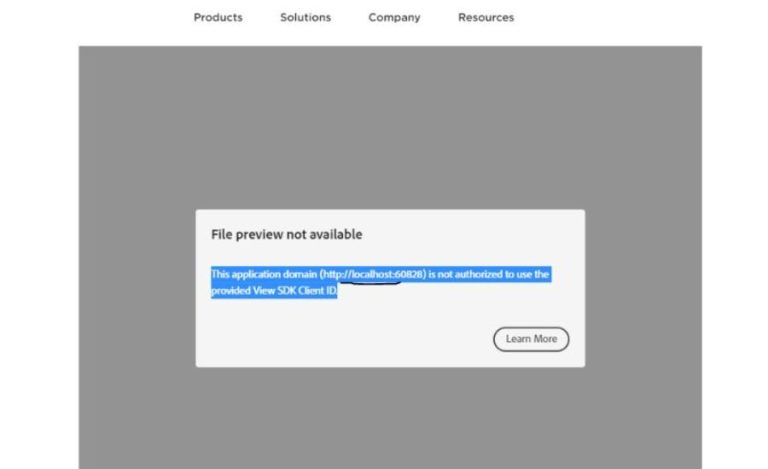The Pts/27 is now Locked by Password: Authentication Failure.
Introduction
In today’s digital world, security is paramount, and understanding account access protocols is essential for all users. One message that can cause alarm is, “The PTS/27 is now locked by password: authentication failure.” This notification indicates that a specific terminal or account, identified as PTS/27, has been locked due to unsuccessful login attempts. Such situations often arise from simple errors like mistyped passwords or issues like expired credentials, but they can also highlight deeper security measures in place to protect sensitive information.
When faced with this message, users may feel frustrated or confused, especially if they are unsure of what triggered the lockout. This introduction will explore the meaning behind this notification, the common causes of authentication failures, and the implications for your digital security. Understanding these elements is crucial in navigating the challenges of account management and ensuring seamless access to essential systems.
Understanding the Lockout Message

When you see the message “The PTS/27 is now locked by Liu.Yang. Password: Authentication Failure,” it indicates that the system or account known as PTS/27 has been locked due to failed login attempts by a user named Liu.Yang. The mention of “authentication failure” implies that multiple incorrect password entries were made, leading to the account being secured as a precautionary measure.
Common Causes of Authentication Failures
Authentication failures can arise from various issues, including:
- Incorrect Password Entry: One of the most frequent reasons for being locked out is simply entering the wrong password. It’s easy to mistype or forget the correct credentials.
- Caps Lock or Num Lock: Users sometimes forget that these keys are active, which can result in incorrect inputs, especially when dealing with case-sensitive passwords.
- Expired Passwords: Many systems have policies that require users to change their passwords after a certain period. Failure to update an expired password can lead to access issues.
- Account Lockout Policies: To enhance security, organizations often implement measures that lock accounts after a specified number of failed login attempts. This strategy helps to prevent unauthorized access.
- System Errors: Occasionally, technical glitches or bugs within the authentication system can mistakenly trigger authentication failures, leading to unnecessary lockouts.
Implications of Being Locked Out
Getting locked out of an account can have several repercussions, particularly in professional or sensitive contexts:
- Access Disruption: Being locked out means losing access to vital tools and information. For those in IT or other critical fields, this can significantly hinder productivity.
- Increased Frustration: Continuous lockouts can lead to mounting frustration, negatively affecting the user’s experience and their perception of the service or platform.
- Security Concerns: Frequent lockouts may suggest that unauthorized individuals are attempting to access the account, raising alarms about potential security breaches.
- Cumbersome Recovery Processes: Recovering access to a locked account often involves navigating a series of steps, such as answering security questions, waiting for administrative approvals, or following recovery email procedures. These steps can be time-consuming and frustrating.
Analyzing Password Management Strategies
With the rising frequency of authentication failures, implementing robust password management strategies has become essential. Here are some effective approaches to mitigate the risks associated with password-related issues:
1. Utilize Password Managers
Password managers are invaluable tools that can generate and securely store complex passwords. By using a password manager, users reduce the likelihood of being locked out due to forgotten passwords. These tools also facilitate secure sharing of credentials among team members, making collaboration easier while maintaining security.
2. Enable Two-Factor Authentication (2FA)
Implementing Two-Factor Authentication (2FA) significantly enhances account security. This method requires a second form of verification, such as a text message or authentication app code, in addition to the password. Even if a password is compromised, the account remains protected without the second authentication factor.
3. Regularly Update Passwords
Establishing a routine for password updates can bolster security. It is advisable to change passwords every three to six months. Regular updates help mitigate the risks of unauthorized access, especially if a password is compromised without the user’s knowledge.
4. Create Strong Passwords
Strong passwords are a cornerstone of effective security. Aim for passwords that are at least 12 characters long, incorporating a mix of uppercase and lowercase letters, numbers, and special symbols. Avoid using easily guessable information such as birthdays or common words.
5. Educate Users
Organizations should prioritize user education regarding password security and the implications of authentication failures. Regular training sessions can help users understand best practices, thereby significantly reducing mistakes and enhancing overall security awareness.
Related Terms to Consider

Understanding the phrase “The PTS/27 is now locked by Liu.Yang. Password: Authentication Failure” involves familiarizing yourself with several essential cybersecurity concepts:
1. Account Lockout Policy
An account lockout policy is a crucial security measure that limits the number of failed login attempts allowed before temporarily locking the account. While it serves to deter unauthorized access, improper management can lead to user frustration and hinder productivity.
2. Password Reset
The password reset process allows users to regain access to their accounts after a lockout. This usually involves identity verification steps, such as receiving a code via email or SMS, ensuring that only authorized users can reset their passwords.
3. Authentication Protocols
Authentication protocols are the methods used to verify a user’s identity before granting access to a system. Common protocols include OAuth, SAML, and OpenID Connect, which facilitate secure logins across various platforms.
4. Brute Force Attack
A brute force attack occurs when a malicious actor systematically attempts various password combinations to gain unauthorized access to an account. This tactic is often responsible for triggering multiple authentication failures, highlighting the need for strong password policies.
Personal Insights and Interpretations
The lockout scenario represented by “The PTS/27 is now locked by Liu.Yang. Password: Authentication Failure” underscores the necessity for robust security measures. This incident illustrates how easily users can become locked out, not solely due to negligence, but also as a result of increasingly complex security protocols designed to protect sensitive information.
Enhancing User Experience
To reduce the frustration associated with authentication failures, organizations should consider the following strategies:
- Streamlined Recovery Processes: Simplifying the steps required to recover access to accounts can ease the stress for users who may feel overwhelmed after experiencing repeated failures.
- User-Centric Design: Ensuring that user interfaces are intuitive and guide users through the authentication process can significantly reduce errors and enhance the overall user experience.
- Transparent Communication: Companies should clearly communicate their lockout policies and the reasons behind these security measures, helping users understand and appreciate the necessity of such protocols.
Building a Culture of Security Awareness

Organizations must cultivate a culture that prioritizes security. Encouraging employees to share their experiences with lockouts can foster collective learning and lead to improved practices. By valuing security and continuously educating users, organizations can significantly mitigate the risks associated with authentication failures.
Final Words
In an increasingly digital world, understanding and managing account security is crucial. The message “The PTS/27 is now locked by password: authentication failure” serves as a reminder of the complexities and challenges users face when navigating access protocols. Recognizing the causes of authentication failures—ranging from simple password mistakes to more complex system policies—empowers users to take proactive measures to secure their accounts. By implementing effective password management strategies, such as utilizing password managers, enabling two-factor authentication, and fostering a culture of security awareness, individuals and organizations can minimize disruptions and protect sensitive information. Awareness and education are key to creating a secure digital environment.
FAQs
1. What does the message “The PTS/27 is now locked by password: authentication failure” mean?
This message indicates that the account or terminal known as PTS/27 has been temporarily locked due to multiple failed login attempts, likely involving incorrect password entries.
2. What are the common reasons for authentication failures?
Authentication failures can occur due to several reasons, including incorrect password entry, forgotten Caps Lock or Num Lock settings, expired passwords, account lockout policies, and system errors.
3. How can I recover access to my locked account?
To regain access, you may need to follow a password reset process, which typically involves verifying your identity through email or SMS, answering security questions, or contacting an administrator for help.
4. What is two-factor authentication (2FA), and how does it enhance security?
Two-factor authentication adds an additional layer of security by requiring a second form of verification, such as a text message or an authentication app code, along with your password. This helps keep your account secure even if your password is compromised.
5. Why is user education important in password management?
User education helps individuals understand the importance of secure password practices, reducing the likelihood of mistakes that can lead to authentication failures. Regular training sessions can significantly enhance overall security awareness within an organization.
Key Facts
- Frequency of Lockouts: Many users experience account lockouts due to simple errors, highlighting the need for effective password management.
- Impact of Lockouts: Being locked out can disrupt productivity and create frustration, particularly in professional environments.
- Password Best Practices: Creating strong passwords and updating them regularly can help prevent lockouts and unauthorized access.
- Security Measures: Implementing an account lockout policy can deter unauthorized access, but it must be managed properly to avoid user frustration.
- Ongoing Awareness: Organizations should foster a culture of security awareness, encouraging users to share experiences and learn from lockout incidents to improve practices.
Read More Information About Anything visit Discover Paradox






